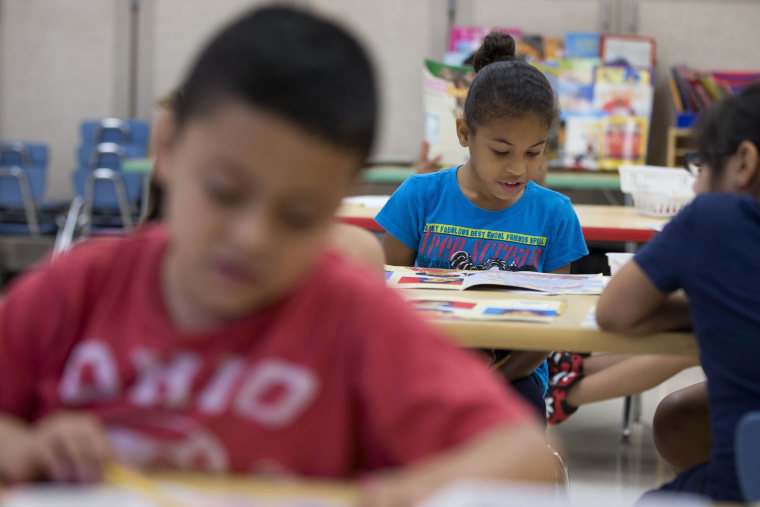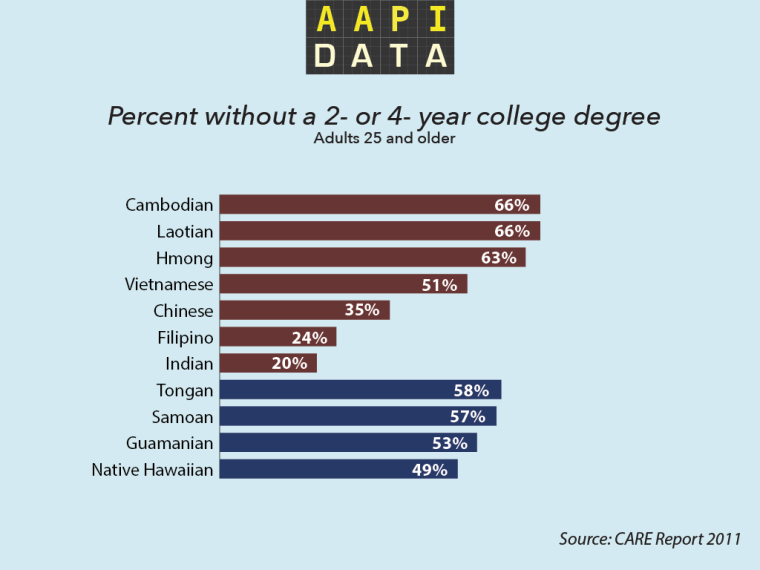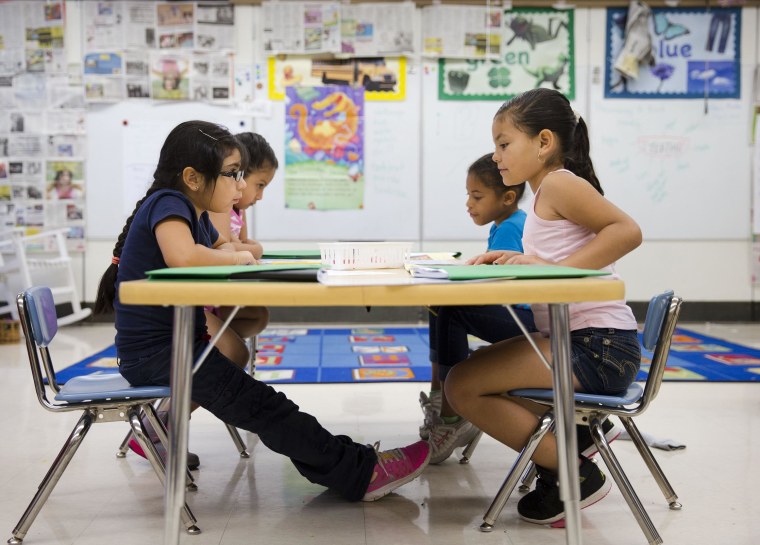As American K-12 students go back to school this fall, the U.S. Department of Education projects that for the first time, students of color will comprise a larger percentage of public school students than white students. Out of 50 million projected public school students, only 49.7 percent will be white, while the other 50.3 percent will be African American, Hispanic, Asian/Pacific Islander, Native American, Native Alaskan, and multiracial. But white students will still be the single largest racial group, with 24.9 million -- almost twice as many students as the second-largest group.
According to the Pew Research Center, “Since 1997, the number of Hispanic students nearly doubled to 12.9 million, and the number of Asians jumped 46 percent to 2.6 million. The number of black students expected in schools this fall, 7.7 million, has been relatively steady during this time.”
This change in demographics is attributed to the increased birth rate of Hispanic Americans and Asian Americans, rather than immigration.

These numbers also do not reveal anything regarding the composition of resources for individual schools as so many neighborhood schools are defacto segregated by income. Private schools show a very different composition, with white students comprising 73 percent of the estimated 4.7 million student body.
“A numerical majority of non-white children is a significant milestone,” said Cynthia Liu, founder of K-12 News Network, a citizen media and civic engagement platform for people who support public schools. “But as we go forward we must be even more conscious that unless that numerical majority translates into true democratic, economic, and political power, we'll continue to wrestle with unequally resourced schools and inequality in access and quality of education.”
“Let's make the pie bigger, and not squabble over the size of the slice.”
The U.S. Department of Education also predicts that the number of high school graduates will follow a similar growth pattern. From school year 2009-2010 to 2022-2023, three groups are expected to experience a decrease in graduates: whites (16%), African Americans (14%), and Native Americans and Native Alaskans (29%). Hispanics and Asian/Pacific Islanders, however, are expected to increase, by 64% and 23%, respectively.
Those K-12 trends do not seem to translate to college enrollment trends, which indicate continuing inequities. Despite decreases in numbers of K-12 students, white enrollment in college between 2011 and 2022 is expected to increase 7 percent, and African American enrollment by 26%. The number of Hispanic students enrolling in college is also expected to increase by 27%, but Asian/Pacific Islander college enrollment is pegged to grow by only 7%. Enrollment numbers are expected to remain static for Native Americans and Native Alaskans.

Among Asian/Pacific Islanders, a group that encompasses startling diversity across multiple ethnic groups, disaggregated data reveal a very different reality.
According to the 2006 American Community Survey, 35 to 40 percent of Hmong, Laotian, and Cambodian Americans do not graduate from high school. According to Karthick Ramakrishnan and Farah Z. Ahmad for Center for American Progress and AAPI Data, “Fewer than 15 percent of Cambodians, Hmong, and Laotians have a bachelor’s degree or higher compared to 72 percent of Asian Indians, 57 percent of Sri Lankans, and 53 percent of Chinese Americans.”
According to Empowering Pacific Islander Communities and Asian Americans Advancing Justice, only 18 percent of Pacific Islanders have bachelor’s degrees.
“For Asian Americans, the moral questions for our bifurcated community will become even more pressing: will we act to protect individual gains made by educated elites, or will we dedicate ourselves to education justice that betters opportunity for all?” Liu asks, “Let's make the pie bigger, and not squabble over the size of the slice.”
